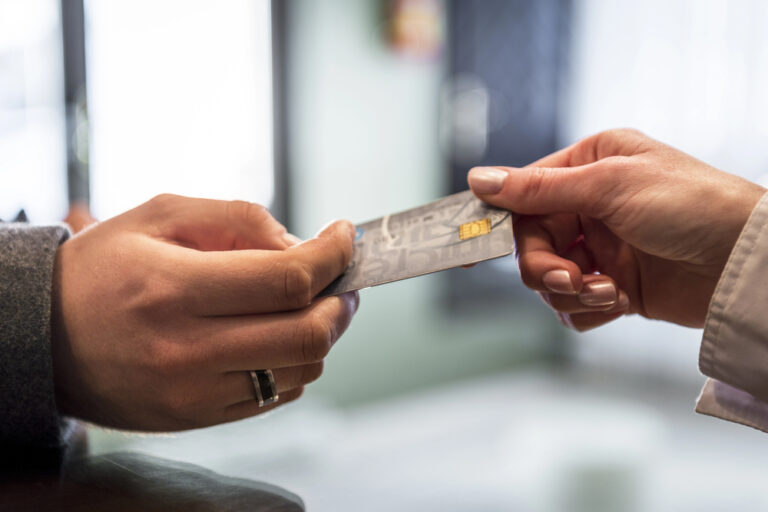While European businesses embrace 3D Secure (3DS) authentication as a regulatory requirement, American companies have largely avoided it, fearing the friction it might create at checkout.
But modern 3D Secure technology has evolved, and US businesses are missing out on a powerful tool that can actually reduce declines and drop-offs while protecting against fraud.
If you’re processing high-ticket transactions in the US market, it’s time to take a fresh look at 3D Secure. Let me show you why this authentication protocol might be exactly what your checkout process needs.
From Friction to Flow
Remember the old days of 3D Secure? Customers got redirected to clunky bank pages, struggled with static passwords, and frequently abandoned their purchases in frustration. That version of 3DS earned its bad reputation honestly. But 3D Secure 2.0 changed everything.
The updated protocol introduces biometric authentication, mobile app integration, and one-time passcodes that work seamlessly within your existing checkout flow.
More importantly, it uses risk-based authentication that allows low-risk purchases to pass through without any customer challenge at all. This “frictionless flow” means legitimate customers rarely encounter additional steps, while suspicious transactions get the extra scrutiny they deserve.
Visa’s case studies show that 3DS 2.0 reduces cart abandonment rates by 70 percent and cuts checkout time by 85 percent. That’s not just better security – that’s better business.
Why US Adoption Lags (And Why That’s Changing)
Unlike Europe, where Strong Customer Authentication requirements under PSD2 mandate 3D Secure usage, the US has no such regulatory pressure. American businesses have operated under the assumption that any authentication adds friction, so they’ve avoided it entirely. This approach made sense when 3DS meant clunky redirects and password challenges, but it’s becoming increasingly shortsighted.
Current adoption rates show the US catching up quickly. American merchants now use 3DS on 77 percent of transactions, compared to 71 percent in Mexico and 77 percent in Brazil. The momentum is building because businesses are realizing that modern 3D Secure can reduce fraud without tanking conversions.
Several factors drive this shift. Digital commerce exploded during the pandemic, mobile payments became mainstream, and fraud losses from card-not-present transactions continue climbing. Meanwhile, global consumers increasingly expect the authentication standards they encounter in regulated markets. US businesses that ignore these trends risk falling behind their more security-conscious competitors.
The High-Ticket Advantage
3D Secure shines brightest with high-value transactions. When customers purchase expensive items – think electronics, luxury goods, or business services – they actually want additional security measures.
The extra authentication step feels appropriate for significant purchases, and the liability shift protection becomes incredibly valuable for merchants.
Consider these industry-specific benefits.
Digital Goods & Gaming
These companies see average chargeback rates of 1.5-2.0 percent, often triggered by account takeovers and subscription fraud. 3DS authentication makes these attacks much harder to execute.
Travel & Events
These businesses face 0.9-1.4 percent chargeback rates from cancellations and high-ticket disputes1. The liability shift protection alone can save thousands in disputed transactions.
Subscription Services
Subscriptions deal with 1.8-2.2 percent chargeback rates from billing conflicts. 3DS provides clear proof that the legitimate cardholder authorized the initial transaction.
For these industries, even small reductions in chargebacks translate into significant revenue retention, not to mention the time saved fighting disputes.
Your Implementation Strategy
Don’t apply 3DS universally – that creates unnecessary friction for low-risk transactions. Instead, use risk-based authentication that challenges customers only when circumstances warrant additional verification.
Smart merchants leverage 3DS to approve riskier transactions that might otherwise get declined. When your fraud prevention system flags a transaction as potentially suspicious, 3DS authentication can provide the additional confidence needed to approve the sale. This approach reduces false declines while maintaining security standards.
Consider implementing 3DS exemptions for transactions under certain thresholds. The liability shift moves back to the merchant for exempted transactions, but the increased conversion often justifies this trade-off for low-value, low-risk purchases.
CONNECT WITH A MORE POWERFUL PROCESSOR
Real-World Results That Matter
The business case for 3D Secure becomes clear when you examine actual implementation results. Deliveroo conducted extensive A/B testing to optimize their 3DS rules, asking a fundamental question: Do the benefits outweigh the negative impact on cart abandonment?
Their answer was decisive. By optimizing overly restrictive rules, Deliveroo reduced their 3DS rate by nearly 40 percent without increasing fraud risks. They achieved this by taking a data-driven approach, identifying which transactions truly needed authentication and which could proceed without challenges.
The fraud prevention benefits are equally compelling. Visa’s research shows that merchants experience significant reductions in fraudulent transactions after adding 3DS to their fraud protection stack. This reduction protects revenue directly while enhancing consumer trust and confidence in your brand.
REDUCE FRAUD, INCREASE CONVERSIONS
Beyond Fraud
Here’s something many merchants don’t realize: 3D Secure can actually improve your authorization rates. Visa and Mastercard report up to a 10 percent increase in authorization rates when merchants use 3DS. This happens because issuing banks view authenticated transactions more favorably and are more likely to approve them.
Think about it from the bank’s perspective. When they see a 3DS-authenticated transaction, they know the cardholder has been verified through their own systems. This additional confidence makes them more willing to approve transactions that might otherwise trigger their fraud prevention systems.
Some issuers even require or strongly favor transactions with 3DS applied, rejecting those that don’t include authentication. This creates a paradox where using too little 3DS can actually increase declines, just as using too much can create friction.
The Mobile Commerce Factor
Mobile commerce continues growing rapidly, and 3D Secure 2.0 was designed with mobile-first experiences in mind. The protocol integrates seamlessly with mobile apps and supports the biometric authentication methods customers already use on their devices.
When customers can authenticate using their fingerprint, face recognition, or device PIN, the security step feels natural rather than intrusive. This mobile optimization is crucial because mobile transactions often face higher decline rates due to fraud concerns, making the authentication and liability shift benefits even more valuable.
IMPLEMENT A BETTER MOBILE CHECKOUT EXPERIENCE
Implementation Best Practices
Successfully implementing 3D Secure requires more than just turning it on. Start by analyzing your transaction data to identify patterns in declines, chargebacks, and fraud attempts. Use this information to create intelligent rules that apply authentication where it provides the most benefit.
Transaction Value Thresholds: Apply 3DS to transactions above certain amounts where the liability shift protection justifies any potential friction.
Risk Score Integration: Combine 3DS with your existing fraud prevention tools, using authentication to approve borderline transactions rather than declining them.
Geographic Targeting: Apply 3DS more liberally for international transactions or regions with higher fraud rates.
Customer Behavior Analysis: Use purchase history and account age to determine authentication requirements for different customer segments.
The Competitive Advantage
While many US merchants still hesitate to implement 3D Secure, early adopters gain significant competitive advantages. They can safely approve more transactions, reduce fraud losses, and offer customers the security they increasingly expect from online purchases.
The liability protection alone provides enormous value. When fraud does occur on authenticated transactions, the financial responsibility transfers to the card-issuing bank rather than remaining with your business. This protection becomes more valuable as fraud attempts grow more sophisticated and costly.
3D Secure adoption in the US will only accelerate as digital commerce continues evolving. Businesses that implement it strategically now will be better positioned for future growth, especially as they expand internationally or target security-conscious customer segments.
The technology has moved far beyond the clunky redirects and password challenges that gave it a bad reputation. Modern 3D Secure enhances rather than hinders the customer experience while providing robust fraud protection and liability shift benefits.
For high-ticket sales in particular, 3D Secure represents a powerful tool for reducing declines, preventing fraud, and building customer trust. The question isn’t whether to implement it, but how to implement it most effectively for your specific business needs.
The merchants who master this balance will find themselves with a significant competitive advantage in an increasingly complex payments landscape.









